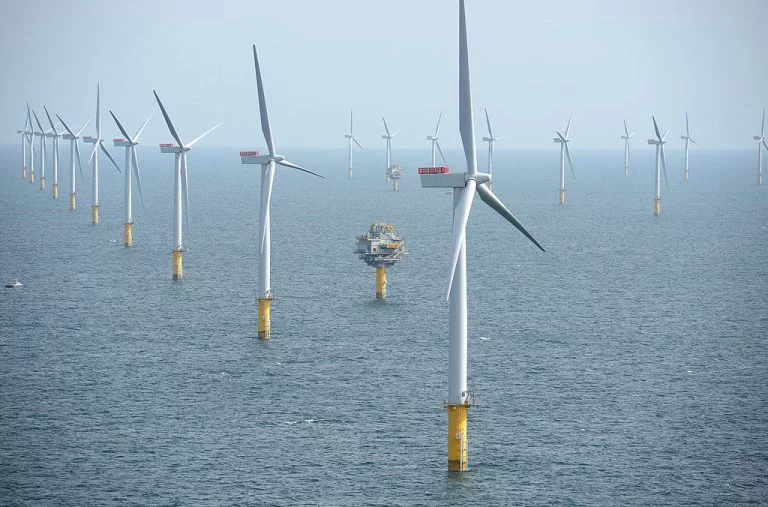Despite establishing itself as a world leader in offshore wind, the UK government has cut financial support on offer for new projects, forcing developers to find further cost savings or sources of investment.
The maximum tariff new offshore wind farms will receive for the power they generate will be at least 40 per cent lower than the rate from the Hinkley Point C nuclear station, being constructed by EDF, France’s energy giant.
As neighbouring Ireland tries to boost subsidies to stimulate the sector, the over-centralised UK government appears to be heading in the opposite direction.
UK energy minister Claire Perry said the aim was to “secure more energy from renewables for less” after announcing it would award annual subsidy contracts worth up to £60 million to new projects through an auction in May.
The budget is little more than a third of the subsidies awarded at the previous auction last year when wind farms with a combined capacity of 3.2 gigawatts got the green light. The government said it estimated the reduced budget would deliver more wind farm capacity, with about 4 gigawatts.
Perry said next year’s auctions would “make the UK a beacon for inward investment and provide the private sector with the certainty it needs to invest”.
Last year offshore wind farms generated more than 6 per cent of the UK’s electricity needs.
Greenpeace’s energy spokeswoman, Kate Blagojevic, said the decision to assign £60 million in funding to the next auction was “a genuinely bewildering move by the government that misses the opportunity to drive down offshore wind costs as fast as possible”.
“They promised over £500 million in investment that was widely expected to be divvied up and made available in sizeable chunks over the next few years,” Blagojevic said. “But this first chunk is a pitiful sum that could end up limiting UK export potential and jeopardising our climate goals. If protecting the climate or boosting a rare UK industrial success story is the government’s priority, then they need to allocate the money that has been promised to accelerate development, bring down costs and cut emissions as quickly as possible.”
Britain has almost 2,000 offshore wind turbines, capable of generating almost 8GW when at full efficiency. Schemes capable of generating about 6GW are under construction or are due to start generating by 2022-23. All the projects operate under subsidy schemes set up by the government and funded through consumer energy bills.
London said it could support up to another 2GW being built each year through the 2020s with offshore wind projects starting up in 2023-24 entitled to a maximum price of £56 per megawatt-hour, falling to £53 per MWh for projects in 2024-25.
A guaranteed price of £92.50 per MWh is on offer for Hinkley Point C, which is due to start in 2025, and £57.50 per MWh for the cheapest offshore wind projects awarded contracts in 2017.
Dramatic cost reductions have been seen in the offshore wind industry in recent years since earlier contracts were criticised for high subsidies. The world’s largest offshore wind farm, the 660MW Walney Extension off the Cumbrian coast in northwest England, received a contract in 2014 guaranteeing a price of £150 per MWh.
All the contract prices follow a 2012 benchmark.
Sheringham Shoal Wind Farm. Picture credit: Wikimedia
Did you like it? 4.6/5 (29)







